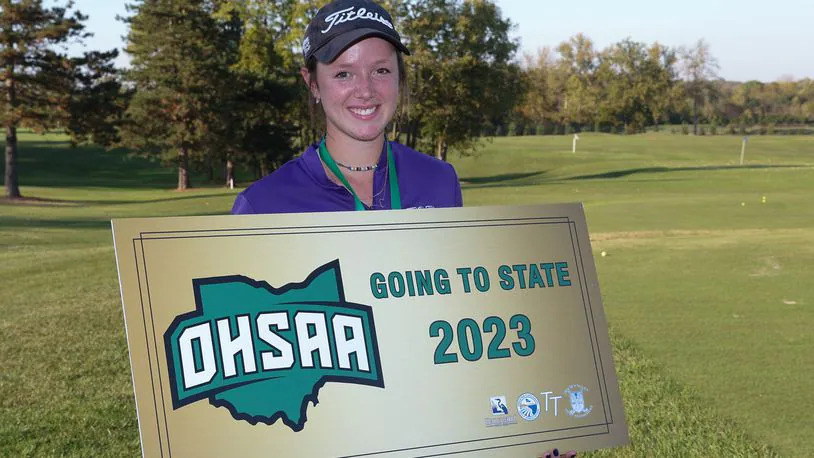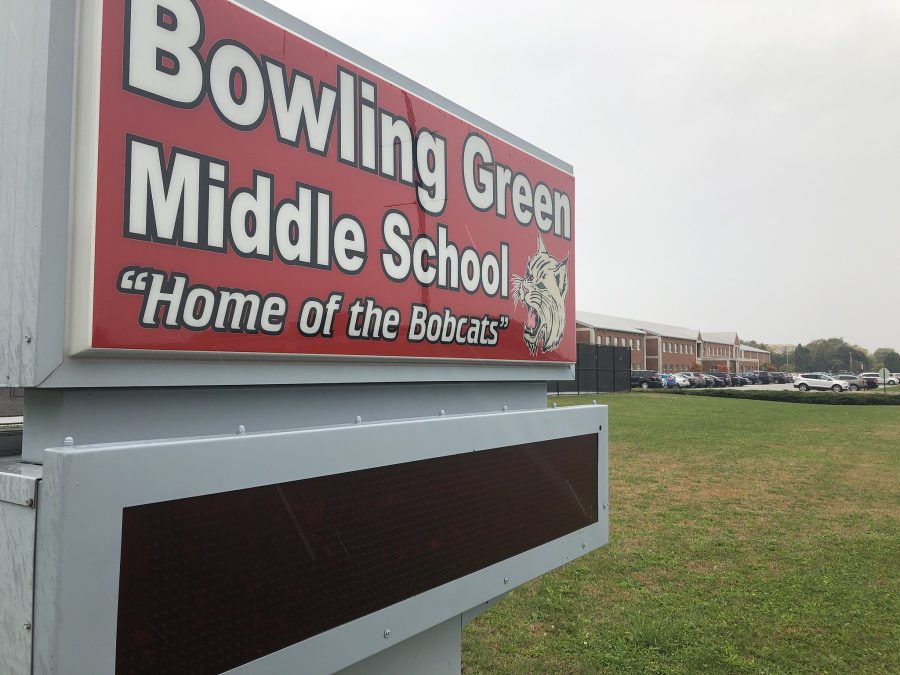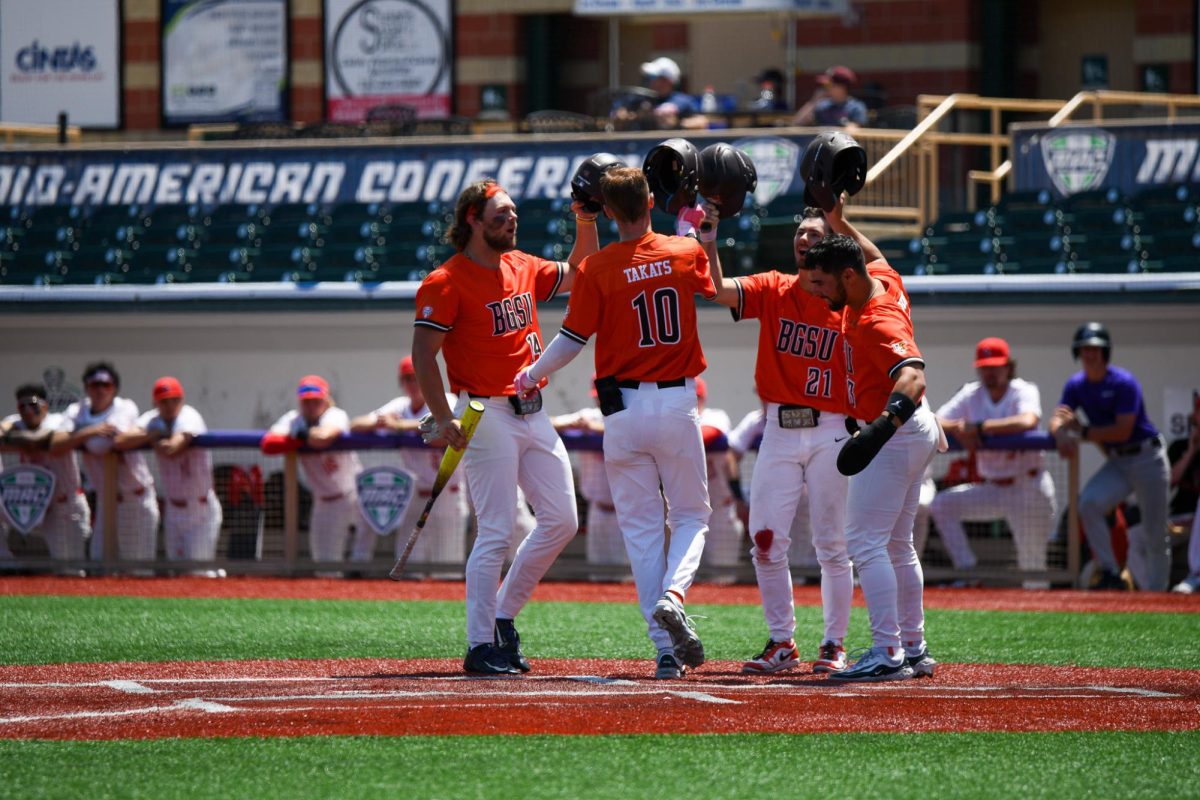The life of a third party is measured most easily in small steps.
For example, if recent history is any guide, a third-party candidate
for Ohio governor should expect only 3 or 4 percent of the votes this
November. But because Bob Fitrakis, the Green Party candidate, and
Bill Peirce, his Libertarian counterpart, are both running, that
number might get halved to 1 or 2 percent each.
According to finance reports filed last week, Fitrakis and Peirce have
spent slightly more than $38,000 for their campaigns so far. That
total is roughly 0.2 percent of Democrat Ted Strickland and Republican
Ken Blackwell’s combined $15.7 million spent, as filed in their
reports.
For their part, 0.2 percent is what independents James Lundeen and
Larry Bays, both gubernatorial write-in candidates, can expect to
poll.
The number of times any of these third party candidates have appeared
in a televised debate with Democrat Ted Strickland or Republican Ken
Blackwell is even lower: zero.
For candidates from parties not named Democrat or Republican, running
for office – especially major, statewide offices – is practically a
doomed affair from the start.
The struggles every third party candidate goes through are many, but
of no help is the relatively quiet support at college campuses. BGSU
is no exception.
“I know that this is not a short-term venture, and I don’t expect to
win this campaign,” said Anita Rios, the Green Party candidate for
lieutenant governor.
With winning the election all but impossible, campaigning takes on a
different form – a labor of love and a dedication to different ideas.
“We believe in a socialist future, a radical transformation,” said
Libero Della Piana, national organizational secretary for the New York
City-based Communist Party. “That’s a huge thing, we know that’s not
small.”
“It’s important to remember,” Piana said, “in a society where there’s
been a major revolution, it was difficult to imagine that it could
have been anything else.”
For now, the “anything else” is the United State’s two-party system,
but there also is a distinct difference in ideology between the five
candidates.
Talk to Fitrakis and he’ll start on wind power and his experience as
an international elections monitor.
“As a third party I think it’s part of our job to guarantee … the
current two party system is fair,” Fitrakis said, “I’m greatly
concerned that the mainstream media and the two major parties are
incapable of dealing with voter irregularities.”
Peirce, a retired economics professor, immediately jumps on the state
government’s back.
“I’m the only one of the candidates who really understands why the
state has not progressed economically,” Peirce said.
“If you listen to the other candidates, they’ll start reading off a
list of industries … they think the government should protect,” he
said. “This is precisely how the state has blown a lot of money.”
Beating the drums for change…
Ask the third-party candidates and you get the same response: Lots and
lots of citizens, some say two-thirds, are fed up with Republicans and
Democrats.
“We all look at politics as something dirty, something corrupt, and it
doesn’t have to be that way,” Rios said.
The call is even greater at college campuses, according to Fitrakis,
where students are “dying for an alternative message.”
But are students hearing the calls for change? It’s tough to say.
Zero also happens to be the number of on-campus groups representing
the Green or Libertarian Parties – and Socialist, Communist,
Constitution and any other parties for that matter.
None of the third or independent candidates have had much of a
presence at BGSU to date.
“We’re not a huge organization and there are a lot of areas we could
concentrate on in terms of youth,” said Scott Urquhart, northwest
regional representative for the Libertarian Party of Ohio.
Peirce has been here once during the campaign, and the Greens haven’t
stopped in at all.
“There’s a tendency in the third party campaign to not invite yourself
up unless someone wants to hear you,” Fitrakis said.
Would it have mattered? Roughly 180 people at BGSU identify themselves
as libertarian on Facebook. That’s small, but it’s more than enough
for a potential organization to match the draw of campus Republicans
or Democrats, who typically get 20-30 students at each meeting.
The only Facebook Green Party-labeled group tops out at 2 members, and
while the site certainly isn’t a strong indicator of the parties’
local popularity, their Democrat and Republican counterparts draw
hundreds of members.
Factor in supporters of any party who don’t have Facebook accounts and
the number increases, but for small parties, no major campus movements
are on the way unless students are at the helm, Urquhart said.
“There’s a lot of political thought in folks that age,” he said, “you
just try to be active and look for the creativity of the campus for
them to do their thing.”
The party itself would focus more on bringing in speakers and working
with the College Democrats and Republicans, he said.
“I really think we probably should be doing more … our ideals may
ring true for a lot of the folk.”
…to an empty room
They certainly have for Mark Hosterman, a senior, libertarian and
Peirce supporter.
Last year, Hosterman and a friend tried to start an on-campus
libertarian group, but the project got nowhere, and he points to the
essential individualism of libertarian thought as a probable cause.
“Libertarians are the type of people that are really hard to get
involved,” Hosterman said, “you have to engage them in a positive
[way].”
Today, he regrets giving up so soon and says he should have done more
to promote Peirce.
But Peirce doesn’t blame Hosterman entirely. He pointed only to
already well-established chapters, like at Ohio State, as the
successful campus libertarian groups.
“[Hosterman] put his finger on a real problem,” Peirce said, “not just
among students but among adults, too.”
Peirce was at BGSU in April as part of his signature drive to get onto
the ballot. Working the Union area, he said he got as many signatures
as he normally did on college campuses, a bit of a surprise.
“People were interested, I’ve been told [northwest Ohio] is heavily
Democratic and might not be receptive,” he said.
BGSU’s Economics Club had been trying to arrange for Peirce to return
before election day, but scheduling conflicts now make that doubtful,
said Matthias Paustian, their adviser.
There used to be a libertarian group in Toledo, but Peirce said now
it’s been reduced to an e-mail list.
“I think people got burned out because their candidates didn’t win in
the past,” he said, “which is a problem that all minor parties face.”
Burnout is exactly what happened to the local Green Party presence
after the 2000 presidential elections, when Ralph Nader refused to
exit, taking, some say, enough votes from Democrat Al Gore to swing
the election to George Bush.
Rios said the contentious vote caused the group to become too big, too quickly.
“In a sense, that became unwieldy,” she said.
“There were a number of people [at BGSU] but they’ve graduated.”
Rios and Fitrakis aren’t planning a last-minute stop at BGSU this
campaign season, and Fitrakis said their work has moved toward
observing the election for fairness.
“If things go bad in this election, we don’t think we can count on the
Democrats … to defend the people’s right to vote,” Fitrakis said.
But he still stressed how easily grassroots organization and youthful
desire for change can be combined into the “future of the Green
movement” – even without his appearance here.
“We’re first going to elect people … in the counties and areas where
the large campuses are,” he said.
“Bowling Green is in many ways the most green area in the state,
you’ve actually got windmills up there,” Fitrakis said, “and that’s
the message that’s got to come out. It’s not surprising it’s coming
out of a college town.”
Fitrakis and Rios both gave support to BGSU’s new chapter of NORML,
the marijuana law reform supporters, but NORML is waiting until at
least next year until it starts to get more politically involved, said
Matt Bruggeman, a group officer.
A taste of Europe
Perhaps unsurprisingly, there are no socialist or communist groups
registered on campus.
“I’m sure [a local socialist group] exists, I just haven’t sought it
out,” said Peter Barlow, a BGSU sophomore, “I’ve pretty much accepted
it’s going to be a while before there’s a socialist president.”
Barlow is in the “BGSU Socialists” Facebook group, an 11-member
hodgepodge that some said they simply stumbled upon.
“Does anyone else share my dismay in that there are only seven members
of this group?” wrote a member, Justin Sisler, on their message board
in September.
“Socialism is still a dirty word to a lot of people, so I’m not
terribly surprised,” replied Alex Bean, a sophomore who created the
group.
In a later interview, Bean said he started “BGSU Socialists” last
spring to seek out other like-minded students, but not for much more.
“The role [is] … just to let other people know there are similar
views out there in Bowling Green, that the whole world isn’t just
divided into the liberal Democrats and the conservative Republicans,”
he said, “that both sides have their coalitions and their extremes and
their moderates.”
Several members describe themselves as democratic socialists, based on
the dominant politics of northern and western European countries.
“We feel it’s necessary to help one another and that the government
should be involved in helping one another,” Sisler said.
“It’s definitely something to pursue and to work for.”
A chapter of the International Socialist Organization is active at the
University of Toledo, but its president and faculty adviser could not
be reached for this article.
Another Facebook search reveals a group named “Modern Communist
Revolutionaries,” but its members, ironically enough, say it was an
inside joke.

















